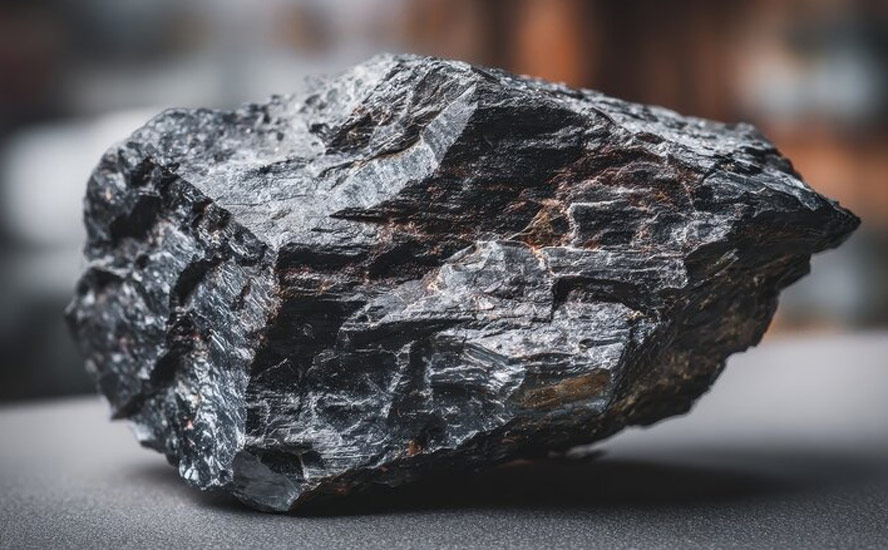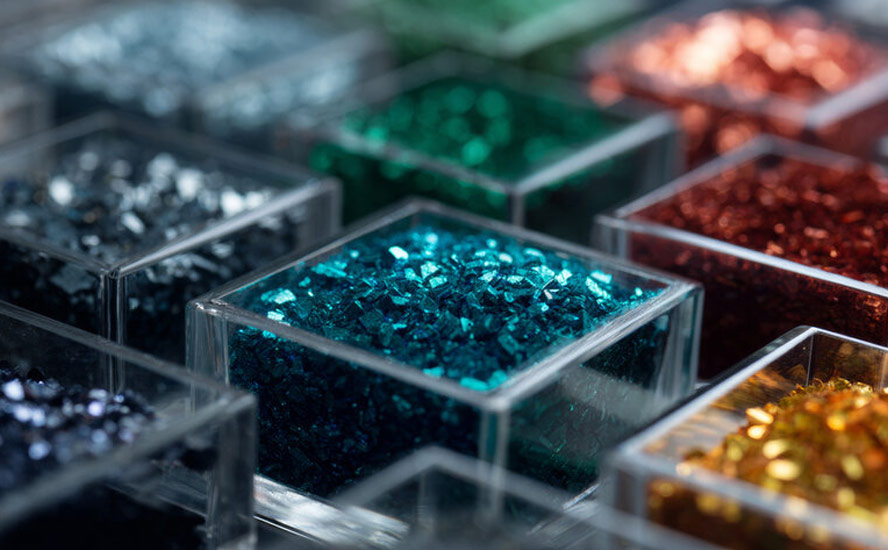How China is locking up critical resources in the US’s own backyard

2018.01.12
In the 1800’s the United States under President James Monroe invoked the Monroe Doctrine, which stated that any effort by European nations to control any independent state in North or South America would be viewed as “an unfriendly disposition towards the United States.”
The intent of the Monroe Doctrine was to free the newly independent colonies of Latin America from mostly Spain and Portugal, so that the States could exert its influence undisturbed.
“The Monroe Doctrine, first articulated in 1823 as a means of blocking external interference in the Western Hemisphere, was the central pillar of US policy toward Latin America until Barack Obama’s secretary of State, John Kerry, told a roomful of Latin American diplomats in 2013 that “the era of the Monroe Doctrine is over.” The statement was part of an effort to rehabilitate the US image in a region long accustomed to seeing the United States as seeking to control it through persuasion when possible, and force when necessary. In a policy paper published last December, Craig Deare, a dean at the US National Defense University and now Mr. Trump’s top Latin America advisor on the National Security Council staff, denounced Kerry’s statement “as a clear invitation to those extra-regional actors looking for opportunities to increase their influence. He specifically mentioned China.” Is Trump resurrecting the Monroe Doctrine? Max Paul Friedman
The point of mentioning the Monroe Doctrine is to illustrate just how far the United States has moved away from it. Now, the real influencer in Latin America is China, evidenced by the billions worth of investment either through the purchase of mining and energy company stakes, or outright mine acquisitions.
The reason, of course, is to feed China’s insatiable appetite for commodities. As an example, the Chinese are both the largest producers and consumers of aluminum and iron ore, with iron ore imports exceeding the 100-million-tonne threshold for the first time in September 2017.
The enormous political, economic and cultural shift in China, from a developing agrarian society to a modern, urban one, has led to some remarkable developments, all of which are good for commodities.
China’s New Silk Road is a $900 billion initiative meant to open channels between China and its neighbors, mostly through infrastructure investments. China, long ago put a lock on much of Africa’s vast resources.

Last April President Xi Jinping announced a grand scheme to transform a backwater called Xiongan, south of Beijing, into a city triple the size of New York. Consulting firm Wood Mackenzie estimates that building the city will call for around 20 million tonnes of steel, 400,000 tonnes of aluminum, and 250,000 tonnes of copper during the first 10 years of construction.
 The Made in China 2025 initiative, which aims to make China’s copper industry more efficient, is expect to grow Chinese copper demand by an additional 232,000 tonnes by 2025. This isn’t counting the need for more copper for railways, electric vehicles, car motors and power transformers.
The Made in China 2025 initiative, which aims to make China’s copper industry more efficient, is expect to grow Chinese copper demand by an additional 232,000 tonnes by 2025. This isn’t counting the need for more copper for railways, electric vehicles, car motors and power transformers.
While iron ore and copper have been the hot targets of overseas acquisitions by Chinese firms as they seek to feed an economy that up until 2015 was growing at double digits, the Chinese have also gone after gold, nickel, tin and coking coal. More recently the most desired metals are those that feed into a tectonic global shift from fossil fuels to the electrification of vehicles. This has meant a hunt for lithium, cobalt, graphite, copper and rare earths – metals that are used in electric vehicles, of which China has become the world leader.
The most interesting part of this trend is not that China is acquiring mines and mining company stakes abroad – that has been going on for at least a decade – but that the overt attempts to lock up the world’s mining and energy resources, some of which are critical to the future world economy, are happening under the nose of the United States in Latin America, in countries previously subject to the Monroe Doctrine and in one case, right in their own front yard.
Rare earth robbery
In 2016 Molycorp’s Mountain Pass Mine in California was shut down because it couldn’t compete with the low rare earth oxide prices coming out of China – which has cornered the market in REOs with about 95% of the world’s production. The timing was bad because Molycorp had just invested $1.25 billion to expand the light rare earths facility. It was forced into bankruptcy, until last summer when an investor group with ties to the Chinese government bought the mine for $20.5 million, beating out American bidders including ERP Strategic Minerals.
While this purchase likely flew under many radars (rare earths haven’t been in vogue among investors for years), it should be greeted with considerable alarm. The Coalition for a Prosperous America is calling on the US government to block the sale on national security and economic grounds. Why? Because rare earths are critical to US military technology, and Mountain Pass was the only rare earths mine in the country. Electric systems in manned and unmanned aircraft, atomic batteries that power guided missiles, and lightweight materials used to make jet engines and rocket noses, all rely on REEs. Without a domestic supply, the Americans must rely on Chinese sources of rare earths to build “made in America” military and space equipment.
Mission critical for “the big four”
Rare earths aren’t the only minerals that the United States is woefully dependent on foreign mines. While the US has consistently maintained that a strong domestic metals industry is an essential contributor to the nation’s economic and security interests, the fact remains that since the 1990s the US has lost control of several critical mined commodities. Written about in a previous Ahead of the Herd post, chromium, cobalt, manganese and platinum group metals represent the metallurgical Achilles’ heel of the United States because of their widespread role and vulnerability to supply disruptions. Six of the world’s top 10 cobalt mines are in the DRC, hardly a stable jurisdiction for mining, where resource nationalism – the tendency of governments to grab control of their own natural resources – is a continuous threat.
Manganese is another striking example. Most of the world’s manganese comes from South Africa, Gabon and China. There are no producing manganese mines in North America. Aside from iron ore, manganese is the most essential mineral in the production of steel. If manganese imports were suddenly stopped, there would be no US steel industry – making this one of the most critical, and vulnerable, supply chains for the nation. The States gets most of its electrolytic manganese from China. EM is used as an aluminum and copper alloy, but its most important application is in lithium-ion-manganese batteries. If the US can’t access competitively priced and reliable supplies of EM, a host of high-tech new applications will be lost to foreign competitors.
While much of the rest of the world is scrambling to tie up control of strategic minerals, America has deliberately hamstrung itself. After World War II the US set up the National Defense Stockpile to acquire and store strategic minerals for national defense purposes, but in 1992, the bulk of these stored commodities were sold off. In 1985 the secretary of the US Army testified before Congress that America was more than 50 percent dependent on foreign sources for 23 of 40 critical materials essential to US security.
Trump gets it
In December Donald Trump issued a directive that aims to identify new domestic sources of strategic metals. The thrust of the directive is to reduce US dependence of foreign supplies of these materials. “The United States must not remain reliant on foreign competitors like Russia and China for the critical minerals needed to keep our economy and our country safe,” Reuters quoted President Trump saying.
While this is certainly a step in the right direction, the United States appears to be doing little to gain access, through acquisitions, joint ventures or off-take agreements, to the materials of the future that are essential in the making of smart phones, computers, military equipment and renewable energy technologies.
The Chinese, on the other hand, are way ahead in foreign mine acquisitions and off-takes. So far ahead that it is unlikely that the United States will ever be able to catch up, and break free of their current state of critical metal dependence. Below are just a few examples.
Argentine gold tie-up
Last summer Shandong Gold partnered with Barrick, the world’s biggest gold producer, to purchase a 50% stake in the Veladero gold mine on the Chile-Argentina border. The $960 million deal included Shandong, China’s top gold miner, studying the possibility of building the massive Pascua Lama gold deposit Barrick has been trying to develop on the same border. The Chinese firm could also work with Barrick to explore other mines in the El Indio gold belt of Chile.
Brazil’s vulnerability is China’s gain
Brazil, one of the best mining jurisdictions with a wealth of minerals including iron ore, gold, copper, manganese and bauxite, should be tightening control of its mineral riches as it struggles through a major recession fueled by a corruption scandal. Instead the country has opened its doors to foreign investment: namely, Chinese.
According to Dealogic Chinese M&A of Brazilian companies totalled $10.8 billion in 2017 and $11.9 billion in 2016. Chinese banks and investment groups have committed $15 billion of a $20-billion China-Brazil Fund, a Beijing-managed fund to finance infrastructure projects that was launched in 2016. The fund is to speed resource development, including rail projects. There’s also the $10 billion “dollars for oil” loan between China Development Bank and Petrobas, the Brazilian state oil company. In return for paying off Petrobas’ debts, China gets oil supply commitments for Chinese buyers.
Next door in Venezuela, despite the basketcase of an economy run under President Nicolas Maduro, China is also investing heavily, hoping to cash in on the country’s natural resources that were plundered by the late dictator Hugo Chavez. In July the government signed agreements totaling just over $1 billion to expand mining in the country gripped by low oil prices and hyperinflation. Venezuelan state-owned CARBOZULIA will partner with Chinese state mining giant Yuankuang Group, as well as a Colombian engineering firm, to renovate mining and port infrastructure in Zulia state to the tune of $400 million. A second $180 million deal has the Venezuelan government working with Yuankuang and China CAMC to jumpstart nickel mining. In a third agreement, Defense Ministry-owned CAMIMPEG signed a $580 million deal backed by joint Chinese and Venezuelan investment to provide services in the areas of mining and gas production, reports Venezuelanalysis.com.
The great lithium grab
Speculation of a lithium shortage, led by Tesla which is helping to drive demand for EVs, almost tripled the price of lithium carbonate to over $20,000 a ton in 10 months. The burgeoning energy storage market for intermittent wind and solar power is also poised to become a major demand driver for lithium.
It is no surprise then that China, where the market for EVs is booming, wants to lock up lithium supply contracts before the price shoots up any further, and to meet the government’s ambitious plans to expand EV production.
Last July, among the bidders interested in Potash Corp’s 32% position in Chilean major lithium producer SQM, was Chinese private equity firm GSR Capital. A few months later Sinochem, China’s state chemical firm, joined the race for the $4-billion stake. In August GSR bought Nissan’s electric vehicle battery business and last fall Chinese carmaker Great Wall Motor signed an agreement with Pilbara Minerals, the Australian lithium miner, to secure supplies for the next five years, the Financial Times reported.
China Molybdenum bought the Tenke copper and cobalt mine in the Democratic Republic of Congo last year for $2.65 billion in an effort to secure a supply of cobalt for EV batteries. In November Chinese battery maker Contemporary Amperex Technology Co Ltd (CATL) said it is “looking into upstream investments in raw materials, mostly cobalt” to ensure stable supply as demand for electric vehicles (EVs) soars, according to Reuters.
The Chinese are also investing in early-stage lithium plays. In December Bacanora Minerals, which has a lithium project in Mexico, announced that NextView Capital, a Chinese institutional fund manager, has acquired a 19.89% equity interest, in exchange for a lithium battery offtake agreement.
While most North American EV enthusiasts are focused on Tesla and its Nevada gigafactory, experts see the real growth happening in China. According to a report by Bloomberg Intelligence, Chinese gigafactories will pump out 120 gigawatt hours annually worth of electric batteries by 2021, compared to Tesla’s 35.
That’s enough to supply batteries for around 1.5 million Tesla Model S vehicles or 13.7 million Toyota Prius Plug-in Hybrids per year according to Bloomberg New Energy Finance.
Warming up to South American copper
Electric vehicles use a lot of copper, and China hasn’t been shy about orchestrating a major increase in copper imports to meet the expected demand. Geologist and newsletter writer Dave Forest noticed that Chinese imports of copper concentrate from both world-leading copper nation Chile and less prolific red metal producer Peru, have both increased in the past couple of years.
He notes that together, Chile and Peru accounted for 55% of China’s total copper concentrate imports of 17.05 million tonnes in 2016. The next-biggest supplier, Mongolia, only shipped 1.50 million tonnes.
Two large Peruvian copper mines are owned by Chinese companies. Chinese state-run Chinalco owns the Toromocho copper mine, while the La Bambas mine is a joint venture between operator MMG (62.5%), a subsidiary of Guoxin International Investment Co. Ltd (22.5%) and CITIC Metal Co. Ltd (15.0%). The Chinese-backed Mirador mine in Ecuador is slated to open in 2018.
Most of the metal produced under these off-take agreements will NEVER come to the market anyplace other then in China. Those metals that do can have their China to U.S. supply shut down any time the Chinese want.
Rise of the petro-yuan
There is one more important development set to increase China’s global commodities dominance, and that is the recent announcement that China is shaking up the oil futures market. Because most commodities are traded in USD, the greenback has a huge advantage over other currencies.
China has long wanted to reduce the dominance of the USD in commodities markets, and its strategy is to launch a crude oil futures contract priced in yuan and convertible into gold. Crude oil futures, either Brent or WTI, are currently priced in USD.
The yuan-denominated oil futures will allow exporters like Russia and Iran to avoid US economic sanctions and circumvent the US dollar. Zerohedge quotes Adam Levinson, CEO at Graticule Management Asia, warning Washington that besides allowing Chinese companies to hedge oil prices, the futures contract will also increase the use of the yuan, “and thus the acceleration of de-dollarization and the rise of the petro-yuan. “I don’t think there’s any doubt we’re going to see use of the renminbi in reserves go up substantially,” says Levinson.
Conclusion
It’s hard to escape the conclusion that China, both through its enormous purchasing power, and its financial muscle that allows it to make substantial investments in mining and energy resources overseas, is assuming a position of world dominance in the commodities markets. Credit must be given to Chinese leadership for forward-thinking in developing its EV industry and for making strategic acquisitions of commodities like copper, manganese, vanadium, lithium and other battery metals that will provide a steady feedstock for the new electrified economy. But scorn must also be heaped on the United States and other countries that have failed to prepare. In the US, public infrastructure is crumbling, the automobile is still king in most states, few cities have decent transit, and many still consider global warming to be a hoax. The situation isn’t much better in Canada.
North American politicians really need to get with the program; to invest in and facilitate the mining of critical metals in North America; to scour the globe for mines that can provide the feedstock for the industries of the future, and invest in them; and to block the sale of strategic mineral assets like Mountain Pass to foreign buyers. If none of this is done, we are quickly heading into a two-tier world of haves and have-nots. Where the haves are countries like China that seized the opportunity to acquire the world’s finite resources while they were still available, and the have-nots are forced to cow to the victors who will control and set the prices of the spoils.
China’s global resource grab, and the ramifications for the rest of the world, are on my radar screen.
Are they on yours?
If not, maybe they should be.
Richard (Rick) Mills
Sign up for Ahead Of The Herd’s free highly acclaimed newsletter.
***
Legal Notice / Disclaimer
This document is not and should not be construed as an offer to sell or the solicitation of an offer to purchase or subscribe for any investment.
Legal Notice / Disclaimer
Ahead of the Herd newsletter, aheadoftheherd.com, hereafter known as AOTH.Please read the entire Disclaimer carefully before you use this website or read the newsletter. If you do not agree to all the AOTH/Richard Mills Disclaimer, do not access/read this website/newsletter/article, or any of its pages. By reading/using this AOTH/Richard Mills website/newsletter/article, and whether you actually read this Disclaimer, you are deemed to have accepted it.
Share Your Insights and Join the Conversation!
When participating in the comments section, please be considerate and respectful to others. Share your insights and opinions thoughtfully, avoiding personal attacks or offensive language. Strive to provide accurate and reliable information by double-checking facts before posting. Constructive discussions help everyone learn and make better decisions. Thank you for contributing positively to our community!
5 Comments
Leave a Reply Cancel reply
You must be logged in to post a comment.


























[…] How China is locking up critical resources in the US’s own backyard […]
[…] How China is locking up important assets within the US’s personal yard […]
[…] How China is locking up essential sources within the US’s personal yard […]
[…] How China is locking up critical resources in the US’s own backyard […]
[…] How China is locking up critical resources in the US’s own backyard […]